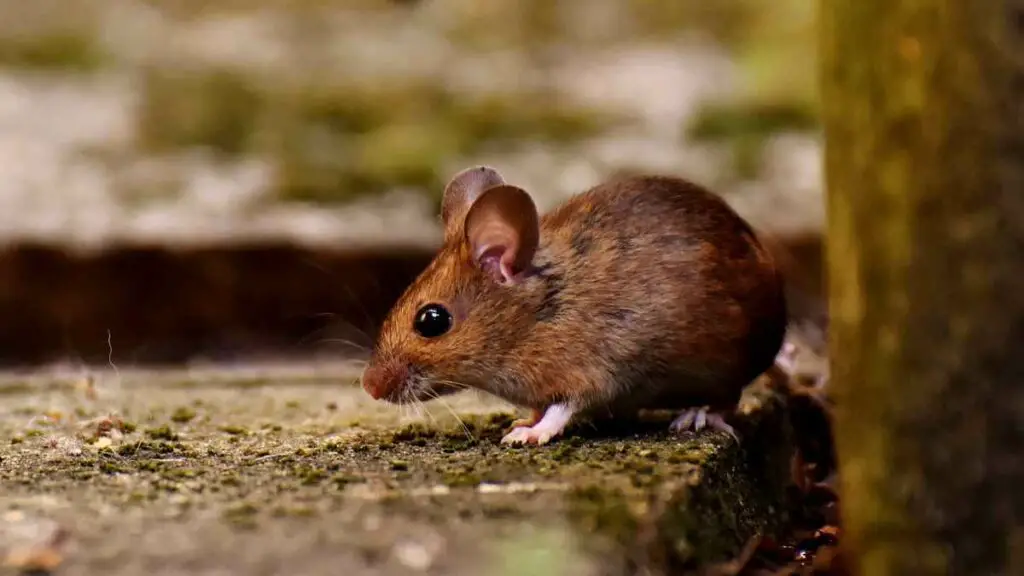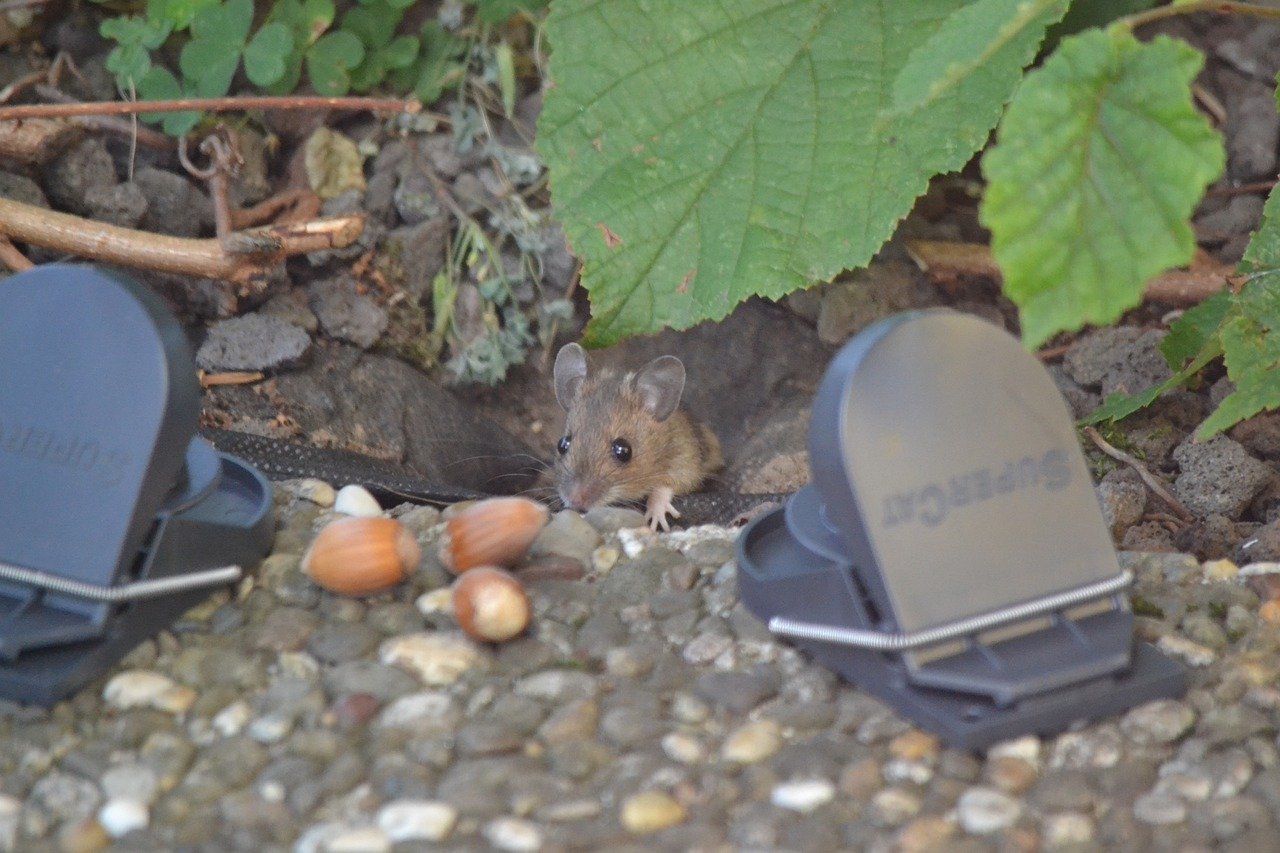Mice may not be welcome in your home, but that doesn’t mean you want to harm them.
You can take several steps to keep them out, including using mouse traps. But what happens when a mouse is caught in a trap but is not dead?
Well, don’t worry. This post will advise you on what you can do with the poor little mouse!
I Have A Mouse Caught In A Trap, But It Is Not Dead! What Do I Do?

The first thing you need to do is make a decision. The two options are obvious. The question is:
Do you think this mouse will survive?
If the answer is yes, you will need to remove the mouse trap and dispose of a live mouse correctly.
If the answer is no, then I am afraid you have no choice but to kill the mouse (humanely).
Unfortunately, the answer is not always that clear cut. You may be thinking ‘sure, it’s easy for you to say, Mr. Rodent Guide, but what if I don’t know whether or not the mouse will survive?
If unsure, your best option is to release the mouse from the trap. For this, you will either need a small box or be at a location to release the mouse (follow my guide on releasing a live mouse back into the wild).
If the mouse can move relatively easily, I would leave it to find a new home. However, if the mouse struggles to move, it is time for you to be humane.
Release the mouse from the trap
Let’s assume it is good news, and you can release the mouse.
Rodents are resilient and will do anything to survive, even chew off their limbs. If there is not too much tissue damage, the mouse could survive.
However, you do not want a repeat performance, so make sure you release the mouse far away from your home and leave a few nuts around, so it doesn’t have to go too far to find food.
They will take a day or two to recover from the ordeal, so a few morsels will be most welcome.
For glue traps, extract the mouse carefully.
You will need thick gloves as the mouse will try to bite you, which can lead to infections and other diseases.
Warm some cooking oil by running hot water over the bottle. Test the temperature of the oil by pouring a few drops on your hand to ensure it is not too hot. Use the oil to soften the glue around the animal’s feet.
Gently work the oil into the limbs, keeping a firm grip on the body – the mouse will try and struggle free, which could worsen the situation.
Again, once free, take the mouse far away before releasing it.
Humanely kill the mouse.
In most cases, if you have a mouse caught in a trap but not dead, you need to end its days as quickly and as humanely as possible.
If you can, take it to a vet or wildlife rescue center, but if this is not practical, you may have to do this yourself or, if you don’t have the stomach for it, get somebody else to do it.
These are the quickest options:
- A swift blow to the head with a heavy object – You must get this right first. It sounds barbaric, but it is immediate.
- Decapitation – Use a shovel if you have one available. Place across the neck and press down with your foot. Again, it sounds barbaric, but there is no extended suffering.
- Asphyxiation – Place the mouse in a jar with baking powder and add vinegar before sealing the jar. The carbon dioxide generated will quickly kill the mouse.
This is not the end of it, however. You then have to deal with the dead mouse. Always remember that a mouse can be just as dangerous dead as it is alive. It can harbor some nasty organisms that will harm you if you’re not protected, so always use gloves—preferably rubber ones that you can wash afterward—and disposable paper towels when handling it.
Place the dead mouse in a polythene bag and seal it, then place this into another bag and seal that—you can’t be too careful with these things. If a glue board has been used, you must double-bag that, too, as the mouse will have contaminated it during its ordeal.
Disposing of the whole package in your normal waste would be best — subject to local restrictions and recycling policy.
How to Safely and Humanely Release the Mouse From the Trap

Follow these simple steps to give the little guy a chance at a second life.
- Step 1: Put on gloves. Before handling the mouse, wear gloves to protect yourself from diseases or parasites.
- Step 2: Approach the trap. Approach the trap slowly and calmly to avoid startling the mouse. It’s important to remain as quiet and gentle as possible to keep the mouse from getting stressed or agitated.
- Step 3: Open the trap. Carefully open the trap door, keeping your hands away from the mouse. If the mouse is still alive, it may be scared and disoriented, so give it a moment to gather.
- Step 4: Use a container to scoop up the mouse. Using a container such as a plastic cup or cardboard box, gently scoop up the mouse and place it inside.
- Step 5: Release the mouse. Take the container with the mouse inside and release it at least one mile from your home. Choose a safe, natural area such as a park or wooded area where the mouse can find shelter and food.
- Step 6: Clean the trap. After releasing the mouse, thoroughly clean and sanitize the trap to avoid attracting other pests or spreading diseases.
Following these simple steps, you can safely and humanely release a mouse caught in a trap back into the wild. Remember, prevention is key to avoiding future infestations. Keep your home clean and seal up any potential entry points to avoid attracting pests in the first place.
What Could Cause A Mouse To Get Stuck In A Trap
Mice are pretty quick! Their reactions are what caused them to get into this predicament.
Picture this: they pick up the scent of some delicious mouse bait you have set up in your mouse trap. The mouse, intrigued, takes a stroll in the direction of the scent. As it approaches the trap, the mouse does not see the huge jaws of death looking down on it. The mouse is too transfixed on the bait!
As the mouse gets closer, it takes a step onto the trigger. The trap slams shut just as the mouse attempts to leave away. Another split second, and the trap would have come down on the neck of the mouse. Now, it has only trapped the mouse by a leg!
That is how you get a mouse in a trap, but not dead…
How Long Does It Take For a Mouse To Die When Caught In A Trap?

Well, first of all, that depends on your trap type. If it is a traditional spring-loaded trap with bait, these are designed to snap the little feller’s neck, so death should be instant, but if that fails, it could take a long time.
With a glue board, there is no easy way out. The mouse gets stuck and as it struggles to break free it gets more entangled in the gooey mess.
Mice need to keep moving to maintain their body temperature, so if they are immobilized, they will die of hypothermia, if not hunger, and dehydration. Either way, it will not end well for the mouse, and it could take up to 48 hours to die.
What are the psychological effects on individuals who have to euthanize the mouse themselves?
Euthanizing a mouse can be emotionally challenging for some individuals, leading to feelings of guilt or distress. It’s important to consider one’s emotional well-being and seek alternatives or support if needed.
Are there any legal considerations or regulations regarding the release of mice into the wild?
Legal considerations for releasing mice vary by location, including potential regulations against releasing non-native species or animals into certain environments. It’s advisable to check local wildlife regulations beforehand.
How can one ensure that released mice do not return to their home or become a problem for others?
Ensuring a mouse doesn’t return involves releasing it far enough away from human habitation, ideally several miles, to discourage it from finding its way back and to reduce the chance of it becoming a nuisance elsewhere.
Conclusion
The best way of dealing with problems like this is to avoid them in the first place. Prevention is better than a cure; you need to (a) keep vermin out and (b) don’t use traps that give you further problems. That way, you will never have a mouse caught in a trap that is not dead!
Follow these steps for a rodent-free life:
- Seal off all possible points of entry
- Don’t leave food lying around that will attract mice, and that includes pet food.
- Use plug-in sonic devices to deter rodents. This won’t eliminate them but will make them someone else’s problem.
- Only use humane traps that do not harm the animal or are designed for a quick death. Glue traps are banned in many countries and should not be used anywhere. Glue traps ARE NOT humane!
- When disposing of trapped, live mice, take them as far away as you can, and always wear gloves.
Most of all, good luck!
References Used:
- “Humane Mouse Traps: Do They Work?” Humane Society of the United States, https://www.humanesociety.org/resources/humane-mouse-traps-do-they-work
- “How to Release a Live Mouse Without Touching It.” Tomcat, https://www.tomcatbrand.com/en-us/library/how-release-live-mouse-without-touching-it








